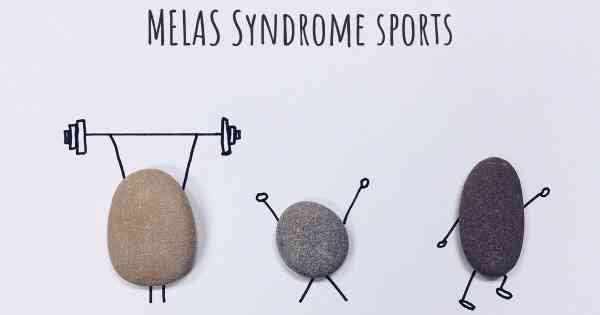Is it advisable to do exercise when affected by MELAS Syndrome? Which activities would you suggest and how intense should they be?
See if it is advisable for people with MELAS Syndrome to practice sports and which ones are the most recommended if you have MELAS Syndrome

Exercise Recommendations for Individuals with MELAS Syndrome
MELAS syndrome, which stands for Mitochondrial Encephalomyopathy, Lactic Acidosis, and Stroke-like episodes, is a rare genetic disorder that affects the mitochondria, the energy-producing structures within cells. This condition can lead to various symptoms, including muscle weakness, fatigue, exercise intolerance, and neurological problems. Given these challenges, it is important for individuals with MELAS syndrome to approach exercise with caution and follow specific guidelines to ensure their safety and well-being.
Consultation with a Healthcare Professional
Before starting any exercise program, it is crucial for individuals with MELAS syndrome to consult with their healthcare professional. They can provide personalized advice based on the individual's specific condition, symptoms, and overall health. The healthcare professional may also recommend specific tests or assessments to determine the individual's exercise capacity and identify any potential risks or limitations.
Low- to Moderate-Intensity Activities
Engaging in regular physical activity can have numerous benefits for individuals with MELAS syndrome, including improved cardiovascular health, muscle strength, and overall well-being. However, it is generally recommended to focus on low- to moderate-intensity activities that are less likely to strain the body excessively.
1. Aerobic Exercises: Low-impact exercises such as walking, stationary cycling, or swimming can be excellent choices for individuals with MELAS syndrome. These activities help improve cardiovascular fitness without placing excessive stress on the muscles and joints. It is important to start slowly and gradually increase the duration and intensity of aerobic exercises over time.
2. Strength Training: Incorporating light resistance exercises into the routine can help improve muscle strength and endurance. However, it is crucial to use light weights or resistance bands and focus on proper form and technique. Overexertion or using heavy weights can lead to muscle damage or fatigue, which may be particularly challenging for individuals with MELAS syndrome.
3. Flexibility and Balance Exercises: Stretching exercises and activities that enhance flexibility and balance, such as yoga or tai chi, can be beneficial for individuals with MELAS syndrome. These exercises can help improve range of motion, reduce muscle stiffness, and enhance overall body control and stability.
Exercise Modifications and Precautions
While exercise can be beneficial for individuals with MELAS syndrome, it is essential to consider certain modifications and precautions to ensure safety and minimize potential risks.
1. Gradual Progression: It is important to start with low-intensity exercises and gradually increase the duration and intensity over time. This allows the body to adapt and reduces the risk of overexertion or exacerbating symptoms.
2. Regular Rest Breaks: Individuals with MELAS syndrome may experience fatigue more easily. Therefore, it is crucial to incorporate regular rest breaks during exercise sessions to prevent excessive exhaustion and allow the body to recover.
3. Monitoring Symptoms: Paying close attention to how the body responds to exercise is essential. If any symptoms worsen or new symptoms arise during or after exercise, it is important to stop and consult a healthcare professional.
4. Hydration and Nutrition: Staying hydrated and maintaining a balanced diet are crucial for individuals with MELAS syndrome. Proper hydration and nutrition support overall health, energy levels, and recovery from exercise.
5. Individualized Approach: Each person with MELAS syndrome may have unique limitations and requirements. Therefore, it is important to tailor the exercise program to individual capabilities and consult with healthcare professionals or specialists who have experience with mitochondrial disorders.
Conclusion
Exercise can be beneficial for individuals with MELAS syndrome, but it is crucial to approach it with caution and follow specific guidelines. Low- to moderate-intensity aerobic exercises, light strength training, and flexibility/balance exercises are generally recommended. It is important to consult with healthcare professionals, gradually progress, monitor symptoms, and make necessary modifications to ensure safety and optimize the benefits of exercise. By taking these precautions, individuals with MELAS syndrome can enhance their overall well-being and potentially manage some of the symptoms associated with the condition.
Posted Dec 24, 2020 by Natalia 2500
Posted Sep 10, 2017 by Zoe Salazar 600








